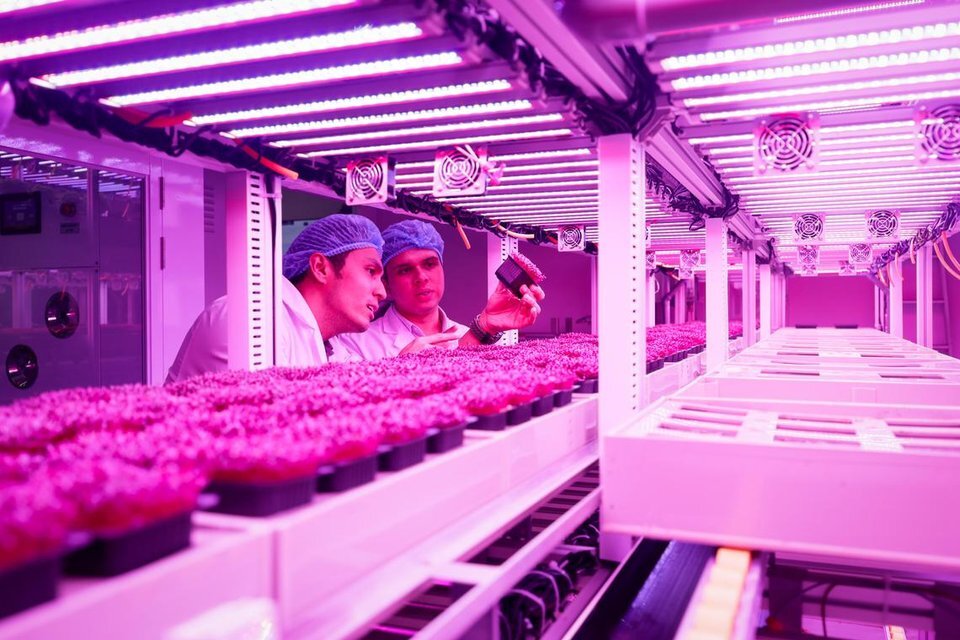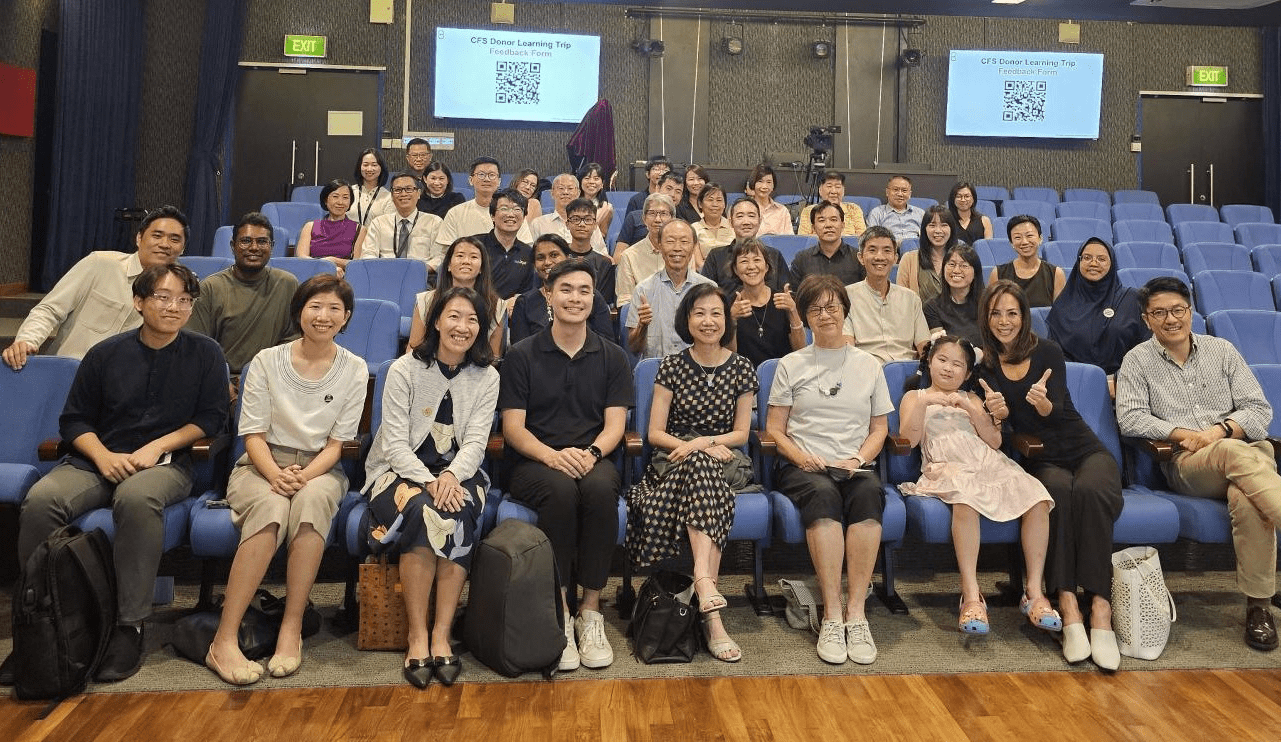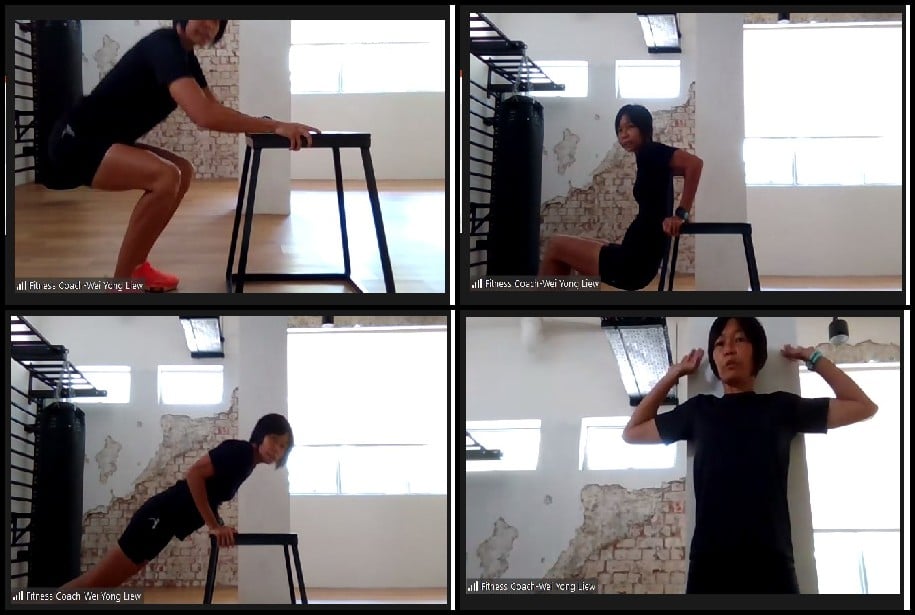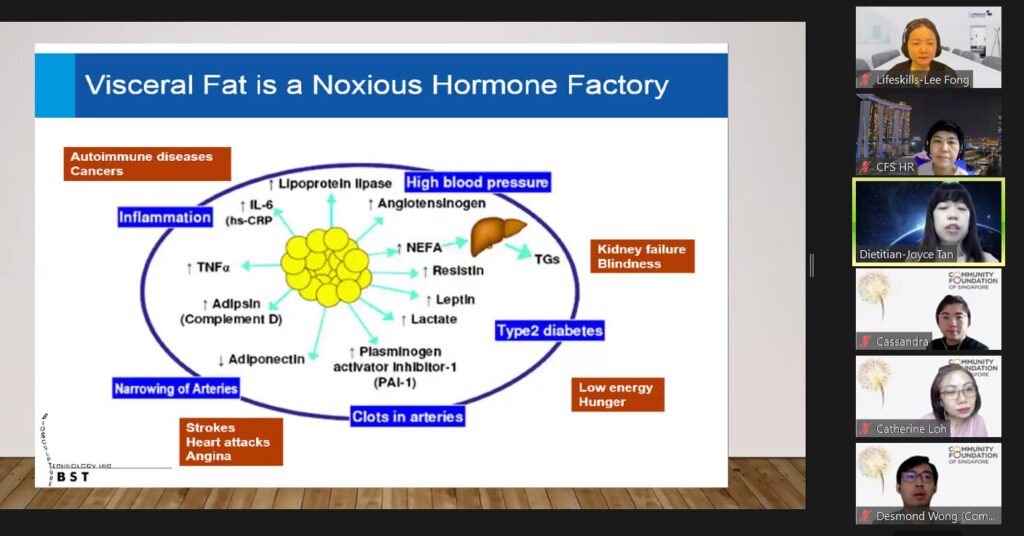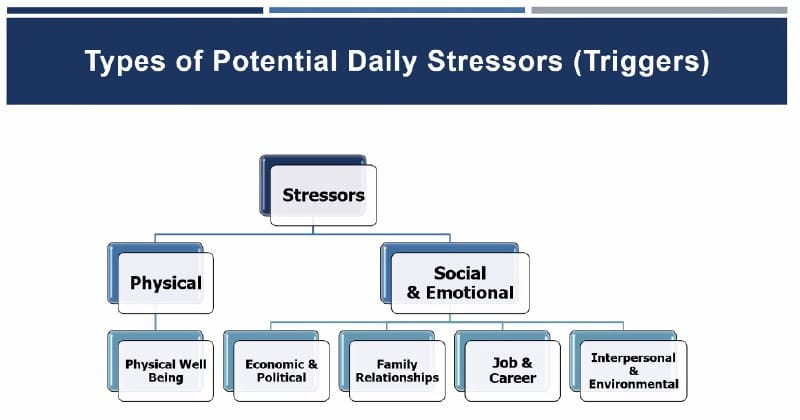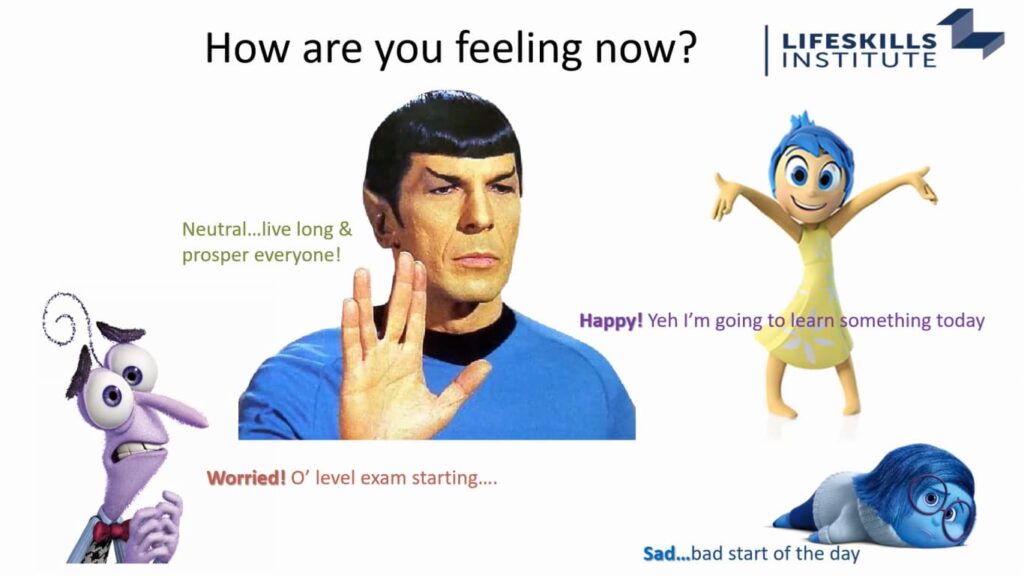CFS’s Lala Café Series: Befriending Stress


CFS’s Lala Café is an employee engagement series for everyone at CFS to learn, socialise and rejuvenate.
For the October edition of LaLa Café, we had the pleasure of having Chai Lee Fong, a consultant at Lifeskills Institute, Joyce Tan, a clinical dietitian, and Liew Wei Yong, a fitness coach to share with us practical tips and advice on how to “Befriend Stress & Build Cognitive Fitness Through Diet and Strength”
Lee Fong first led us through an engaging discussion on what is stress, and how to deal effectively with it. She shared that potential daily stressors could trigger 2 types of stress: acute stress vs chronic stress. Acute stress, being the stress we experience due to a sudden calamity befallen upon us or a temporary event, triggers in us a “fight, flight, freeze” response to stress. On the other hand, chronic stress is worse in that one could experience buildup of such stress, or to put it in Lee Fong’s words, the “drip drip drip effect” and hence cause burnout.
Lee Fong shared several stress management methods such as adopting a positive mindset. This could result in 3 key advantages, namely: growth, resilience and strength in us on the whole. She advocated that for every event, with a positive outlook, we could then cope better. For example, she suggested to view the pandemic from another lens, as something that previous generations have not had the chance to experience, and with this whole new light, it did seem like it was something special rather than catastrophic, proving that her method of taking on a positive view worked! She accentuated to all of us that stress can cause damage to the brain, such as the hippocampus.
After Lee Fong’s wonderful sharing, we learnt more from Joyce who shared about nutrition and mental health.
Joyce shared in-depth knowledge on the different types of fat and sugars to avoid to prevent ourselves from going on a blood sugar rollercoaster, some hidden within our food and even our sauces! Many of us jumped at the chance and bombarded her with questions on what oils to use, whether plant-based milk was a better choice etc. She patiently answered all our questions and enlightened us on the truths behind certain myths such as brown rice and whole meal grains.
She also shared more about one thing many working adults are obsessed with – coffee! Mainly she shared alternatives to sugars we could use in our coffee, such as Stevia, and advised against aspartame, as it is an artificial sweetener that could trick our tongue but not our brain.
The session ended off with a live fitness demo by Wei Yong, who showed us numerous core exercises we could easily do at home using a chair or against a wall, as strengthening our core would benefit our strength and resilience as a whole and improve our brain health. She also demonstrated a few stretching exercises that would benefit us after sitting in front of the computer for long periods of time, which many of us were thankful and applauded her for.
CFS takes pride in supporting our employees’ mental health and overall wellness, and supports mental health funds such as Mind The Gap 200.
CFS’s Lala Café is an employee engagement series for everyone at CFS to learn, socialise and rejuvenate.
For the October edition of LaLa Café, we had the pleasure of having Chai Lee Fong, a consultant at Lifeskills Institute, Joyce Tan, a clinical dietitian, and Liew Wei Yong, a fitness coach to share with us practical tips and advice on how to “Befriend Stress & Build Cognitive Fitness Through Diet and Strength”
Lee Fong first led us through an engaging discussion on what is stress, and how to deal effectively with it. She shared that potential daily stressors could trigger 2 types of stress: acute stress vs chronic stress. Acute stress, being the stress we experience due to a sudden calamity befallen upon us or a temporary event, triggers in us a “fight, flight, freeze” response to stress. On the other hand, chronic stress is worse in that one could experience buildup of such stress, or to put it in Lee Fong’s words, the “drip drip drip effect” and hence cause burnout.
Lee Fong shared several stress management methods such as adopting a positive mindset. This could result in 3 key advantages, namely: growth, resilience and strength in us on the whole. She advocated that for every event, with a positive outlook, we could then cope better. For example, she suggested to view the pandemic from another lens, as something that previous generations have not had the chance to experience, and with this whole new light, it did seem like it was something special rather than catastrophic, proving that her method of taking on a positive view worked! She accentuated to all of us that stress can cause damage to the brain, such as the hippocampus.
After Lee Fong’s wonderful sharing, we learnt more from Joyce who shared about nutrition and mental health.
Joyce shared in-depth knowledge on the different types of fat and sugars to avoid to prevent ourselves from going on a blood sugar rollercoaster, some hidden within our food and even our sauces! Many of us jumped at the chance and bombarded her with questions on what oils to use, whether plant-based milk was a better choice etc. She patiently answered all our questions and enlightened us on the truths behind certain myths such as brown rice and whole meal grains.
She also shared more about one thing many working adults are obsessed with – coffee! Mainly she shared alternatives to sugars we could use in our coffee, such as Stevia, and advised against aspartame, as it is an artificial sweetener that could trick our tongue but not our brain.
The session ended off with a live fitness demo by Wei Yong, who showed us numerous core exercises we could easily do at home using a chair or against a wall, as strengthening our core would benefit our strength and resilience as a whole and improve our brain health. She also demonstrated a few stretching exercises that would benefit us after sitting in front of the computer for long periods of time, which many of us were thankful and applauded her for.
CFS takes pride in supporting our employees’ mental health and overall wellness, and supports mental health funds such as Mind The Gap 200.
- Related Topics For You: EVENTS, HEALTH, MENTAL WELLBEING, PROMOTING HEALTHCARE, SPORTS
